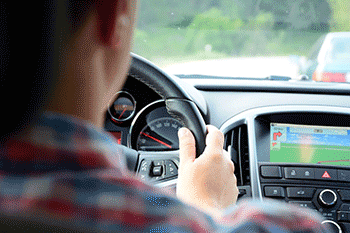Driving safely after turning 60 is crucial for maintaining road safety and preventing accidents. Here are some tips to help older motorists stay safe on the road:
- Avoid cell phone use: Distractions like cell phone use can be particularly dangerous for older drivers, as reaction times may be slower. The National Safety Council emphasizes that using a cell phone while driving increases the risk of a crash, and even hands-free features do not reduce this risk.
- Exercise caution at intersections: Research from the Insurance Institute for Highway Safety shows that a significant percentage of fatal collisions involving drivers aged 70 and older occur at intersections. Be especially vigilant and make sure to yield the right of way, especially when making left turns.
- Limit night driving: Traffic death rates are higher at night, and aging drivers may face challenges such as glare, fog, and difficulty reading signs. It's advisable to avoid driving on unfamiliar streets at night and opt for well-lit routes with clear signage.
- Assess driving ability: Pay attention to feedback from others, such as honking horns, concerns from loved ones, warnings from law enforcement, or difficulties with oncoming headlights. If you find driving challenging, consider limiting yourself to shorter trips during favorable weather and daylight.
- Reduce speed at night: Aging affects the eyes, causing pupils to become smaller and less responsive to changes in light. Older drivers may experience reduced reaction time at night, so it's essential to reduce speed when driving in low-light conditions.
- Regular eye exams: Schedule annual eye exams to monitor any age-related changes in vision. The American Optometric Association recommends regular eye check-ups for individuals over 60 to detect and address issues like macular degeneration promptly.
- Anti-reflective coatings: Invest in eyeglasses with anti-reflective (AR) coatings to minimize glare and improve visibility, especially during nighttime driving.
- Consider specialized eyeglasses: High-definition lenses can help reduce halos, starbursts, and glare caused by eye aberrations, providing sharper vision for driving. Consult your eye care professional for personalized recommendations.
- Address age-related diseases: If you have age-related conditions like cataracts or diabetes, seek appropriate care. Aspheric intraocular lenses during cataract surgery and regular eye exams for diabetic retinopathy can help maintain clear vision and prevent severe vision loss.
By following these tips and staying proactive about eye health, older drivers can enhance their safety on the road and contribute to overall road safety.
Make your appointment today
To make your appointment, simply give us a call (760)-948-3345 or
or
Due to COVID-19 safety protocols, all eyewear services are currently by appointment only. Please call to make an appointment.
At Golden Eye Optometry, we view good vision care as front line protection at every age. A routine eye exam can detect more than poor vision. It can shed early light on glaucoma, macular degeneration, cataracts and diabetes.